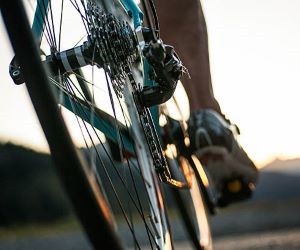Master endurance cycling in tropical climates with effective strategies. Learn hydration, heat adaptation, and training tips for peak performance.
HOW DO I AVOID SADDLE SORES DURING ENDURANCE RIDES?
Endurance cycling pushes both body and equipment to their limits, and one of the most common obstacles riders face is saddle sores. These painful skin irritations can derail training, ruin events, and impact overall performance. Avoiding them requires a mix of preventive care, smart gear choices, and disciplined recovery. This article explores practical, science-based strategies to help cyclists maintain comfort and performance during long rides.

Understanding saddle sores
Saddle sores are a combination of skin irritation, folliculitis, and in severe cases, infection caused by prolonged pressure, friction, and moisture in the saddle area. For endurance riders who spend hours in the saddle, these issues can progress quickly if ignored. Understanding their causes is the first step in effective prevention.
What causes saddle sores?
The primary drivers of saddle sores are repetitive friction between skin and cycling shorts, sustained pressure on soft tissues, and trapped moisture from sweat. Poor bike fit, low-quality padding, and inadequate hygiene all increase the likelihood of sores forming during long rides.
Different types of saddle sores
Saddle sores can manifest in multiple forms. Some are superficial chafing or skin abrasions, while others develop into inflamed hair follicles or cyst-like bumps. Recognizing the type early helps cyclists decide whether simple rest and hygiene are sufficient, or whether medical attention is needed.
Chafing: surface irritation caused by friction.
Folliculitis: inflamed hair follicles from bacteria and sweat.
Cysts: deeper, painful lumps that may require treatment.
Infections: severe cases needing antibiotics or medical care.
Why endurance rides increase risk
The longer a cyclist remains in the saddle, the more cumulative pressure, friction, and sweat build up. Unlike short rides, endurance sessions often extend beyond the body’s natural tolerance, making prevention strategies critical to long-term success.
By understanding the root causes and recognizing early warning signs, cyclists can stop saddle sores from becoming career-derailing injuries.
Prevention strategies
Preventing saddle sores is far easier than treating them. Successful endurance cyclists rely on a combination of bike fit adjustments, clothing choices, hygiene practices, and training habits to stay comfortable mile after mile.
Dialing in your bike fit
An improper bike fit is one of the leading causes of saddle discomfort. Professional fitting ensures that saddle height, tilt, and fore-aft position distribute weight properly across sit bones rather than soft tissues. A well-fitted bike reduces pressure points and minimizes skin friction.
Choosing the right saddle and shorts
Not all saddles work for every rider. Saddles come in different widths, cut-outs, and padding densities, designed to accommodate different anatomies. Similarly, high-quality cycling shorts with seamless chamois reduce friction and wick away sweat. Investing in proper gear is one of the most effective long-term prevention methods.
Get a professional bike fit to reduce pressure points.
Experiment with saddles to find the right width and cut-out design.
Invest in high-quality bib shorts with a seamless chamois.
Rotate between multiple pairs of shorts to reduce wear.
Hygiene and skincare
Cleanliness is essential for preventing saddle sores. Cyclists should always start rides with freshly laundered shorts, avoid wearing underwear under bibs, and shower promptly after finishing. Chamois cream can reduce friction and provide a protective barrier, while post-ride antibacterial washes prevent bacterial buildup.
Training and pacing habits
Endurance riders should gradually increase mileage to allow the body to adapt. Taking standing breaks during rides relieves pressure, while adjusting cadence and shifting weight periodically reduces constant strain on the same contact points. Overtraining or ignoring discomfort accelerates the risk of sores.
Incorporating these prevention strategies consistently ensures that saddle sores remain a manageable challenge rather than a recurring obstacle.
Recovery and long-term care
Despite best efforts, most endurance cyclists will encounter saddle sores at some point. Effective management ensures that small irritations do not escalate into prolonged downtime or serious infections.
Immediate care for saddle sores
At the first sign of soreness, rest and hygiene are critical. Taking a day or two off the bike, keeping the area clean and dry, and using over-the-counter antiseptic creams often resolve mild cases. Ignoring early symptoms typically worsens the issue.
When to seek medical attention
If sores become swollen, extremely painful, or filled with pus, medical evaluation is necessary. Doctors may prescribe antibiotics or recommend drainage for cysts. Continuing to ride through these conditions risks systemic infection and longer recovery times.
Rest and clean the affected area promptly.
Use topical creams for minor irritation.
Consult a doctor for infections or persistent cysts.
Resume cycling gradually with preventive measures in place.
Building long-term resilience
Cyclists can reduce recurrence by refining gear, maintaining hygiene, and respecting early warning signs. Rotating saddles and shorts, experimenting with different chamois creams, and integrating recovery routines all contribute to long-term resilience. Mental strategies, such as treating saddle sores as signals rather than failures, help cyclists maintain motivation through setbacks.
Ultimately, long-distance comfort depends on a cycle of prevention, recovery, and adaptation. By combining practical strategies with consistent self-care, endurance riders can ride further, faster, and healthier without being sidelined by saddle sores.
YOU MAY ALSO BE INTERESTED






